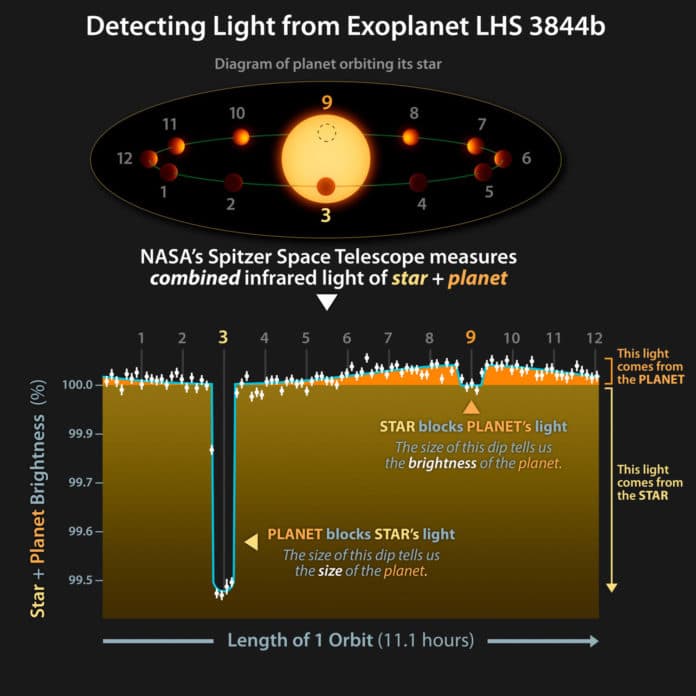Most known terrestrial planets orbit small stars with radii less than 60 percent of that of the Sun1,2. Theoretical models predict that these planets are more vulnerable to atmospheric loss than their counterparts orbiting Sun-like stars. To determine if a thick atmosphere has made due on a small planet, one methodology is to scan for signatures of atmospheric heat redistribution in its thermal phase curve.
The revelation of one such planet beyond the nearby solar system with no atmosphere at all mists the prospects for its peers. Scientists have shown that planet LHS 3844b, a terrestrial exoplanet orbiting a small sun 48.6 light-years away, has no detectable layers of gases blanketing it to protect it from its sun’s dangerous radiation and trap its heat.
A planet’s atmosphere makes it viable for hosting life and gives indications of whether it really does. It is likewise key to understanding a planet’s origin, nature, and current conditions.
Laura Kreidberg, a Clay Fellow at the Harvard-Smithsonian Center for Astrophysics (CfA) said, “We’ve learned over the last decade that planets similar in size to the Earth are abundant around other stars — which is crazy exciting for the prospects of potentially detecting life on one. However, just because we know these planets are out there, we don’t know anything about whether they typically have atmospheres or not.”
The results show that it’s possible for planets circling M dwarf stars, which are a lot smaller and cooler than the sun, to be without atmospheres- this was, truth be told, the primary real disclosure of such a situation. The stars are known for discharging ultraviolet light, which can make for less-hospitable solar systems.
Kreidberg said, “One thing about small M dwarf stars is that they’re very bright in the ultraviolet for the first billion years of their lives, so there are a lot of outstanding questions about whether Earth-size planets around these stars can hold onto their atmospheres. There are several theories that predict atmospheric loss, but it’s never been observed until now.”
Scientists used a technique to determine if planet LHS 3844b has no atmosphere. For this, they measured one side of its climate and compared it to the other to look for a maximum temperature difference. The planet, which is on an 11-hour orbit, is tidally locked, which means one side consistently faces the star and the other is consistently in dark.
A planet with an atmosphere would move a portion of the heat it ingests from the hot side to the cold. Using the data from NASA’s Spitzer Space Telescope, the specialists discovered that wasn’t the case with LHS 3844b. They found the side facing the star was warmed at in excess of 1,400 degrees Fahrenheit, while the clouded side was reliable with absolute zero.
Kreidberg said, “We’re pretty convinced that this thing is a bare rock.”
The planet is 30 percent bigger than Earth. And as scientists reported, “the planet’s surface is made of basalt, a very dark rock that can form from cooled lava, similar to the maria on the moon.”
The results, described in an Aug. 19 paper in the journal Nature.
